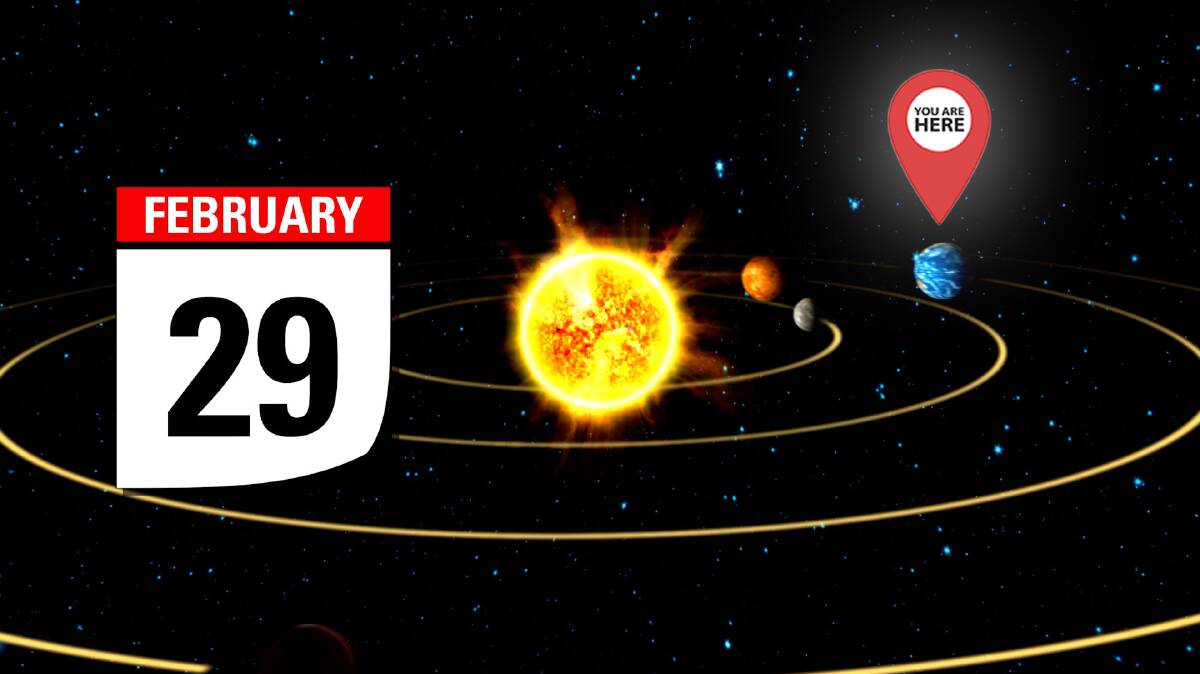
Every four years, an extra day is added to the calendar as February 29. We call this the 'leap day'.
But why do we need this special additional day anyway?
To answer that, we need to look to space. This is how American astrophysicist and TV personality Neil deGrasse Tyson explains it:
"We, on earth, as we orbit the sun, we know how to calculate a year. That's how long it takes to come back to where you were," he said.
"But it turns out, if you cut the number of days we live into the year, it doesn't divide evenly. There's not an even number of days in the time it takes the earth to go around the sun."
So, a calendar year measures the time it takes the earth to orbit the sun and we round that to 365 days.
But, it actually takes the earth 365.24219 days to orbit the sun completely. Annoyingly, that's around a quarter of a day - or 5.8 hours - longer than our calendar years.
So, in 45 BC, Emperor Julius Caesar devised a plan to use those extra hours in a creative way. This, we call, the 'Julian Calendar Rule'.
Rounding that 5.8 hours to 6, that quarter of a day adds up to a 24 hours every four years, when it's added to the calendar as February 29 - or the leap day.
"We just ignore that quarter day, sweep it under the rug, for three years, and then in the fourth year, how many quarters have you added up? Four quarters," explains Dr Tyson.
"So there's a whole day we've saved up and we put that day back into the year, giving it to the year's shortest month, February."
Without that extra day every four years, the gap between the calendar year and the seasonal year would gradually increase over time.
For example, over a century, the calendar would be off by 25 days. And that would untether the months from the seasons, causing all sorts of problems for the world's agricultural production.
But adding the leap day to the Julian calendar proved to be an imperfect system. So, in 1582, the Pope Gregory theXIII devised the Gregorian calendar to improve the functionality of the leap day over time.
According to the Gregorian calendar, we don't actually have a leap year every four years because every hundred years, it needs to be skipped.
Why? Because adding a leap year every four years over-corrects the calendar.
The earth's orbit is 365.24219 days, but we round that to 365 days in a usual year, and 366 in a leap year. That's not a perfect equation.
We've rounded the additional orbital time to a quarter, and that rounded difference does add up over time.
"[A year] is not actually 365 and a quarter days, it's a little bit less than a quarter. So you wait four years, you put in a whole day and you've put in too much," Dr Tyson explains.
"So you have to wait until you put in a whole day too much, then you take out a leap day that would have otherwise appeared. So every hundred years, you've over-corrected by an entire day."
Of course, removing that day every century does then push the imbalance the other way, meaning that every 400 years the otherwise skipped leap day is re-added to the calendar.
"By taking out that day [every 100 years] now you have over-corrected in the opposite direction and now there's a day that you have to put back in, it turns out, every 400 years," Dr Tyson said.
"So every 400 years, the century year that would have not had a leap day, gets a leap day put back in. It sounds complicated but it has profound implications.
"In the year 2000, it was a century year that wouldn't normally get a leap day, but it's a century year divisible by 400, so we put the leap day back in."
See? Simple.
Thanks to Pope Gregory XIII, we have some mathematic rules we can follow to know when a leap year will fall.
His 'Century Rule' and '400 Year Rule' state three principles to determine whether a leap year will be observed or not.
Principle 1: Years that are divisible by 4 will have a leap day.
Principle 2: Years that are divisible by 100 will not have a leap day.
Principle 3: Years that are divisible by 400 will have a leap day added.
That means it was a leap year in 1600 and in 2000, but not in 1700, 1800, or 1900.
If you're still struggling to remember when a leap year falls, just remember, most of the time, the Summer Olympic Games are held in leap years.


